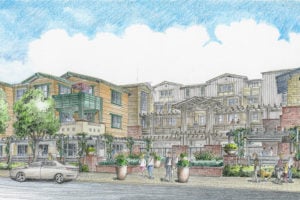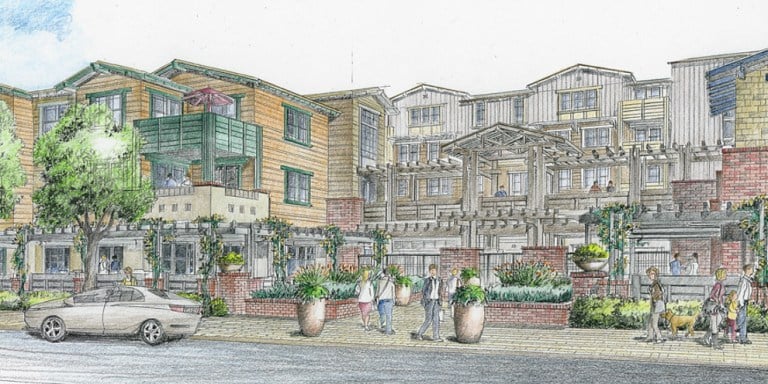Stanford’s plans for development in Menlo Park have met with concern from some residents who question the University’s commitment to minimizing traffic and improving bike routes in the area. The University says its commitments stand.
Stanford’s plan, the Middle Plaza project, will convert vacant car lots on El Camino Real into housing as well as office and retail space. Stanford hopes to create a vibrant “village character” for the development, according to a Stanford News release.

A group of Menlo Park residents worried about aspects of the development forwarded a list of demands to Menlo Park City Council members in a meeting held on March 27.
“These demands included mitigating potential traffic, especially with respect to the Stanford Complex’s main office, which will disrupt the quiet Allied Arts neighborhood with over 900 cars a day,” wrote Perla Ni, a resident of Menlo Park who opposes Stanford’s development plans, in an email to The Daily.
She said the group of concerned residents also wants Stanford to fulfill its commitment to contribute to a bike crossing between the Middle Plaza project site and Burgess Park. She believes the University is reneging on its promise.
“Stanford has a unique opportunity to provide safe, public access through an undercrossing,” she said, adding that the addition “would be in line with its goals to reduce traffic and provide more bike and pedestrian access.”
According to Ni, she and other residents have not received a response to their list of requests.
Ni has previously been an active opponent to Stanford building initiatives: In 2013, she organized a “Save Menlo Park” movement concerned about traffic and other impacts of expansion that helped push Stanford to drop medical offices from its El Camino Real development plans.
Jean Lin, senior planner for the City of Menlo Park, disagreed with the residents’ stance, stating that Stanford has acknowledged its promise to fund a grade-separated bike crossing and has agreed to undergo a negotiation process to determine what its contribution would be.
“Stanford has even held several community meetings on the Middle Plaza at 500 El Camino Real Project, with the most recent one held last month,” Lin said. “We also continue to make sure that information on the project is readily available … on our website and in our office.”
The University contends that its revised project plans would double Middle Plaza in space and produce less traffic than original plans. Stanford spokesperson E.J. Miranda also asserted that Stanford’s proposal has the support of the Menlo Park community at large, based on a recently held Open House where attendees were asked about their views on the new design plans. Of the 125 residents who attended, 85 percent saw the project as a welcome change and 70 percent approved of the land use.
“We strongly object to any claim that the university has ‘reneged’ on its commitments,” wrote Miranda in an email. “In fact, our design changes have provided safer bike access and our land use changes have reduced traffic impacts by more than 50 percent than what was studied — and already approved — in the Menlo Park Specific Plan.”
With some residents, city planners and developers at odds, discussions will continue. Three community meetings have been scheduled to discuss the Menlo Park development plan, the first of which will occur on May 4.
Contact Surbhi Sachdeva at surbhi3 ‘at’ stanford.edu.
